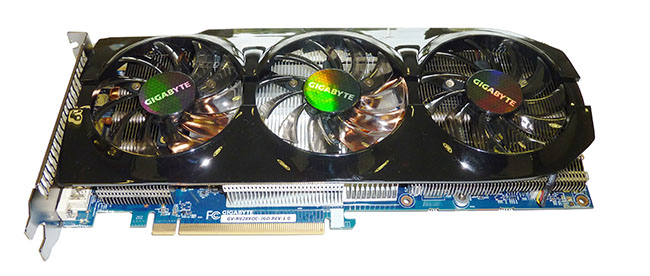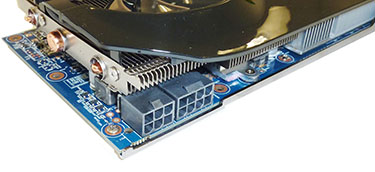And the underlying GPU is?
No sooner had AMD launched an entire stack of 'new' Radeon graphics cards, board partners have rushed to get products on to retailer's shelves.
The Radeon R9 280X, priced from $299, is very much like a Radeon HD 7970 card at heart. Both share the same architecture and, tellingly, the only manifest difference is with a firmware update that enables the new card to run three screens without using the DisplayPort connector. It is very reasonable to assume that, a few weeks back, partners began rebranding said HD 7970s into R9 280Xs and thus enabling speedy time to market.
Gigabyte's already managed to get its card into the retail field. Officially known as the GV-R928XOC-3GD, but colloquially referred to as the WindForce OC to enthusiasts, let's take a closer look.
Time-to-market concerns betray an obvious truth; this card's provenance lies squarely with the HD 7970 family of cards. We know this because removing the white sticker near the PCIe connector reveals that the PCB is from an HD 7970 OC board. This model, as we suspected, is a BIOS-flashed card from the previous generation.
Presented with now-familiar triple-fan cooler seen on various high-end models in the past 18 months, Gigabyte goes with what it knows. There's little reason to reinvent a heatsink for a GPU that has very similar thermal characteristics to a number of others.
In fact, Gigabyte has such confidence in the cooling that the core frequency is boosted from a peak of 1,000MHz to 1,100MHz, making it faster than the monster-cooled Asus R9 280X DirectCU II TOP. Memory, meanwhile, is left at the default 6,000MHz, which is disappointing given that other partners releasing factory-overclocked cards tend to boost both core and memory.
Gigabyte's cooling takes the open-air approach, where the trio of fans blast air over a non-enclosed heatsink. Three 8mm-thick heatpipes pierce the array of aluminium fins and are flattened at the section which makes contact with the R9 280X GPU. This WindForce OC model has separate heatsinks charged with cooling the VRMs and, as a token gesture for the memory, the main heatsink has sections of thermal tape that make contact with the memory chips underneath.
A vertical-aligned brace holds the secondary heatsink in place. The 3GB of framebuffer is all contained on the top side, split over 12 GDDR5 chips.
Here's something different, though. Gigabyte substitutes one of the reference card's DVI ports for a mini-DisplayPort. This appears to be a backward step in terms of output flexibility, as we know the R9 280X's firmware upgrade enables both DVI and HDMI to be used to power three monitors.
Gigabyte's use of these outputs is simple enough; they are standard on the underlying R7970OC-3GD card. The one key benefit for this model is the street price of sub-£240, which is lower than practically all other OC models. The best way to think of this card, we suppose, is as a superclocked, well-priced Radeon HD 7970.














